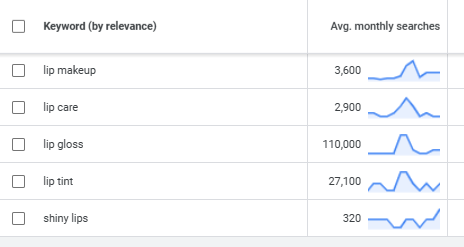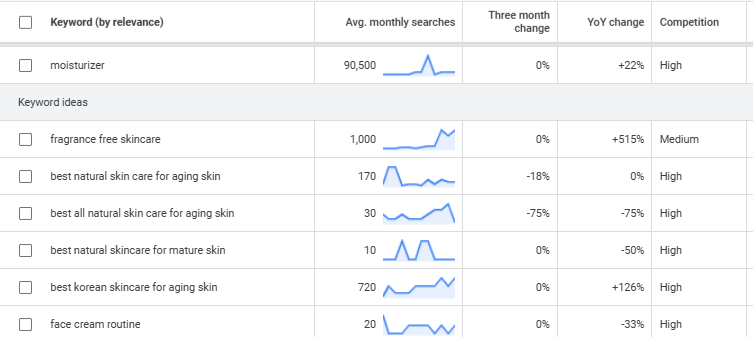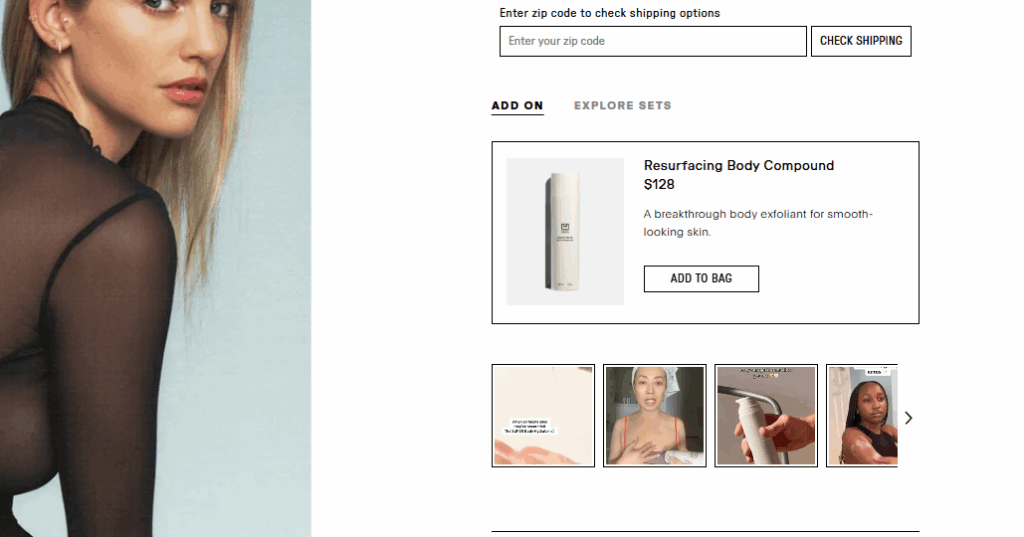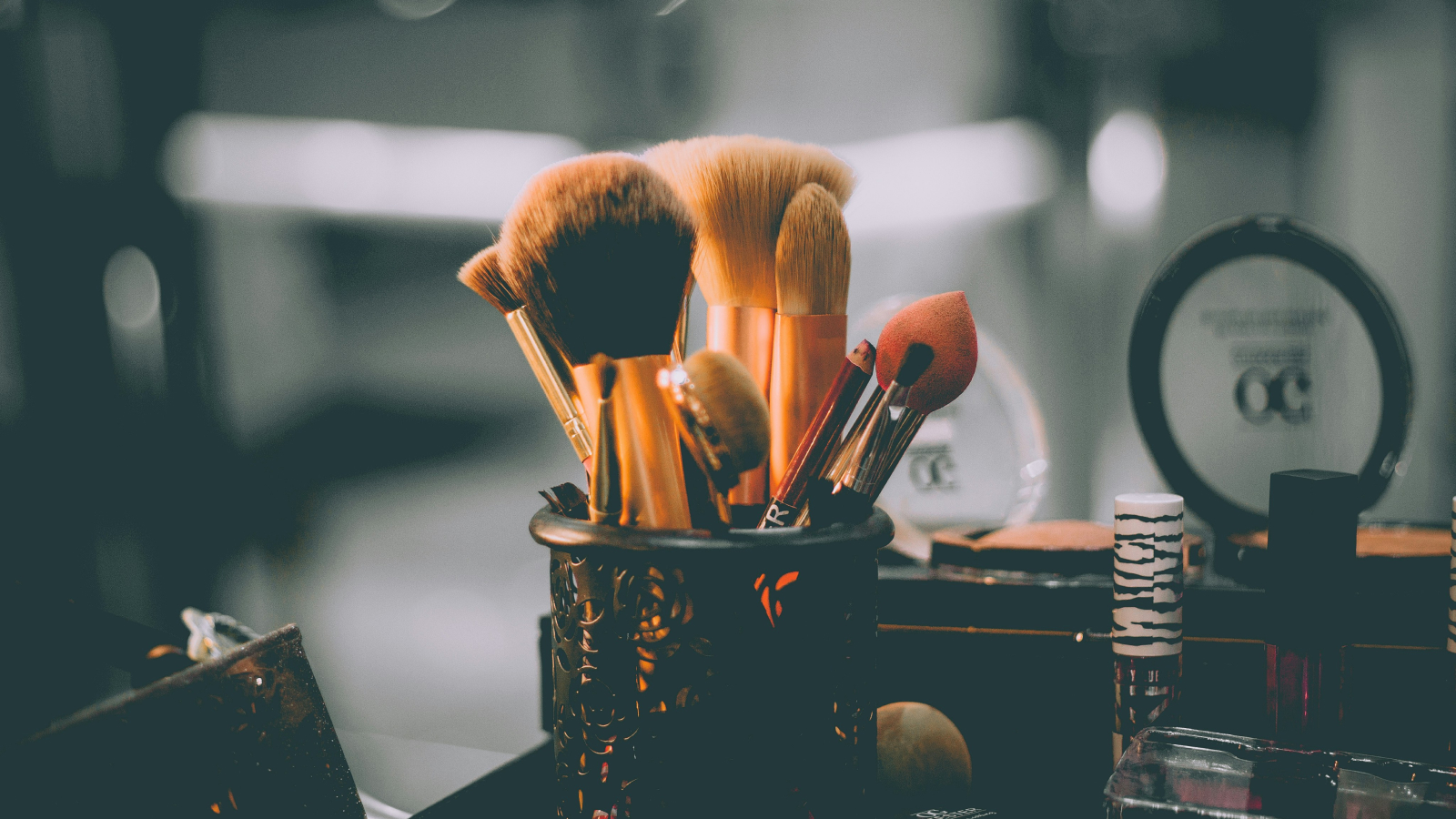Search engine optimization (SEO) for beauty brands can amplify their voices and help them rise above competitors’ noise and rankings, so the only ‘barely there’ look achieved is with makeup, not search results. As a marketer, I’ve seen firsthand how lackluster search performance can derail traffic, especially in the competitive beauty industry.
If your cosmetic or skincare company’s site hasn’t seen the light of day on search engine results pages (SERPs), it’s time to make over your marketing with an integrated SEO strategy. SEO for beauty companies can provide the glow-up brands need to transform their content marketing into a tool to drive traffic and audience engagement.
Amplify Your Strategy
After years of writing for skincare and cosmetic brands, I understand the importance of certain techniques, such as layering products for maximum effectiveness. And I can also attest that the same strategic application methods apply to search marketing. Integrating search engine optimization into your content marketing strategy promotes maximum changes without doubling your efforts.
What makes SEO for the beauty industry different is that the highly visual nature of these sites means brands need to focus on optimizing all aspects of content, from written articles to image alt text and technical performance.
So, where do you start? I suggest beauty brands focus their SEO efforts on their site’s on-page elements first, including landing pages, product descriptions, and blogs, and then address technical issues to improve page speed and performance.
If you’re ready to get started, use these beauty industry SEO tips:
Use Relevant, Targeted Keywords
Whether you sell fragrances, makeup, personal care, skincare, grooming products, or a combination, your marketing must be relevant to your core shoppers. This sounds basic, but I frequently encounter clients whose messaging is misaligned with their actual customers. Using the right SEO keywords for beauty products and articles can help you attract an interested audience. These tips can help you select strategic keywords for SEO:
Choose Non-Branded Keywords FTW
You already own branded terms for your company and products, especially if these are trademarked. What you don’t own are non-branded keywords, which are essential to raising brand awareness and attracting new customers in the research phase. If you only refer to your lip gloss by its branded name, you’re likely not appearing for some high-volume searches, such as:

Use keyword research tools to find word and phrase ideas to use in your product descriptions and content, as shown above. You can—and should—still use your trademarked terms, but consider adding generic keywords to help people understand what you’re selling.
For example, if I’m selling a lip product called Sassy Pout™, I should consider adding lip tint at the end to target that keyword and better describe the product. Just remember, whatever you choose should be accurate. If it isn’t a lip tint, use gloss, shiny lips, or another term. Keyword tools will give you plenty of options to work with.
Practice In-Depth Keyword Research
The beauty industry is filled with terms and phrases with deliciously high search volume. But in this industry, competition for nearly every term is fierce. Let’s take ‘moisturizer’ for example. The snapshot below shows this term pulls in 90,500 average monthly searches. Ranking at the top of the SERPs for ‘moisturizer’ would generate alot of traffic for your brand, but it would also mean working your butt off to try to nudge out huge industry players (and sorry, it likely won’t work).

This is where I’d usually recommend brands look for long-tail keywords. These gems—keywords with three or so words—usually offer easy wins and big gains. But here’s the thing: long-tail keywords for beauty products still have intense competition.
Look at ‘best all natural skin care for aging skin’ in the image above. This is a super-specific keyword, so you would assume competition would be low. It’s high. The difference between a beauty brand succeeding here and not is patience—both in taking the time to find the diamonds in the rough and allowing time for those seed words to take hold and shine.
Pro tip: Select a phrase from the super-juicy search list for a new seed word and see what turns up. If you look below, you’ll see this paying off. Several low-competition words suggested fit my ‘moisturizer’ product and offer solid volume. ‘Hydrating skin care products’ and ‘skin hydrating moisturizer’ are excellent target phrases to weave into your content marketing.

Diversify Your Keywords
While beauty industry terms may be second nature to your team, they may not be to your customers. Some beauty aficionados may look for ‘hyaluronic acid skincare’ and other ingredient-based terms, and others might type in ‘wrinkle cream.’ If your site lacks a breadth of keywords, your narrow focus could be alienating potential customers and keeping your brand out of the SERPs.
Instead of thinking about how you want your products to be searched, consider how people are searching. SEO keywords for beauty products can fall into many categories, including:
- Concerns: acne treatment for adults, moisturizer for dehydrated skin, anti-wrinkle cream
- Products: waterproof black eyeliner, lip plumper gloss, nighttime body scrub
- Ingredients: retinol face wash, hyaluronic acid face cream, vitamin C face serum
- Lifestyle: vegan lip gloss, cruelty-free eye makeup, organic body cream, affordable skincare for teens
Research SEO keywords for beauty products using multiple sources, including keyword research tools like SEMRush and Ahrefs, and Google’s free search methods.

The image above shows one of my favorite free research tactics. Just open a browser window, start typing, and watch Google auto-fill suggestions. The list that populates is based on recent searches, ideal for content topic ideas and non-branded keywords to seed your research.
Publish Helpful, User-Focused Content
You can run a successful beauty business and still not be considered an authority in Google’s eyes. I don’t say this for shock value; I’m saying this to help you understand the real importance of content marketing for cosmetic brands. The only way beauty brands can be competitive with optimized content is if what they deliver is informative, high-quality, and valuable. Any cosmetic company can add keywords to a web page, but not all can offer content that builds authority, loyalty, and trust.
Beauty blogs and articles must be helpful and high quality, or your readers will bounce. When Google sees this behavior, it is less likely to recommend your site to someone looking for advice, tutorials, reviews, or products. When Google sees evidence of your authority and gets on board, you’ll rise in the SERPs.
- Know Your Audience Preferences: Check your referral traffic and the search terms that led customers to your website to understand which topics resonate. Prioritize content to meet this demand and your audience demographics.
- Organize Your Content: Create topic pillars around key product groupings, such as moisturizers, cleansers, and body products. Link published content back to each pillar for easy customer navigation and search engine signaling.
- Avoid Filler and Flimsy Content: ‘Lip filler’ should be the only fluff in your content. Avoid keyword-stuffed, flimsy articles and instead answer searchers’ questions with your industry-led insights and experience.
- Prioritize Evergreen Content: Despite how trend-obsessed the beauty industry is, customers still desire timeless, seasonless content (known as evergreen) that provides ongoing value. You can cover the latest fad, but also provide buying guides, how-to articles, and tip lists.
- Optimize Images: We both know beauty websites are visual, but what many brands forget is that every visual needs a text equivalent. Alt text makes your site inclusive for browsers using voice readers or adaptive search technology and search engines rely on alt text for context.
- Incorporate Keywords Naturally: Imagine keywords like a no-makeup makeup look. It’s reasonable to believe they are there, but they fit in naturally, improving the page without flashy announcements.
The example below is the opposite of au naturel keyword usage. Remember that Google is smart and your readers are smarter. ‘Sporty makeup looks’ and ‘makeup to withstand a workout’ also suffice to explain the article, without cluttering the page with repetitive keyword use.

Strategically Incorporate UGC
If you haven’t considered sharing user-generated content (UGC) anywhere but social media, you’re missing SEO-building content marketing opportunities. UGC is unfiltered, honest, and visually appealing—what more could beauty brands ask for?
The example below shows how UGC can be integrated seamlessly into your product page. The real-life visuals complement this beauty brand’s aesthetics and grab shoppers’ interest.

Not only do user testimonials, unboxing videos, how-tos, and product explainers provide audiences with fresh, unfiltered content, they also boost SEO for beauty companies by:
- Introducing SEO keywords for beauty products and application techniques naturally
- Providing fresh, user-first content that builds trust and authority
- Increasing keyword diversity with conversational, long-tail terms
- Establishing brand credibility with real-life testimonials
- Improving engagement and dwell time, signaling value to search engines
- Creating opportunities for backlinks and social shares
Beauty Industry SEO Tips for Leveraging UGC
Whether you want to bolster your website with real inspiration and authentic reviews or improve your brand’s relevance, UGC is an excellent tool. To help get the most bang for your proverbial buck, follow these pointers to make your UGC program successful:
- Optimize UGC on Social Platforms: Google is now indexing Instagram, so it’s more important than ever that your owned and contracted UGC be optimized.
- Encourage Participation: Send post-purchase requests and optimize social media campaigns to encourage followers to share their experiences. Use a clear CTA with instructions and links to simplify submissions.
- Highlight UGC: Add user content to impactful, high-traffic site pages, such as landing pages, product pages, or in blog comments.
- Use schema markup: Code reviews with structured data to help search engines understand the content and build credibility for the page it appears on.
- Moderate UGC: UGC isn’t a set-it-and-forget-it tactic. Use moderation tools to filter out spammy or irrelevant content, and also take time to thank reviewers to encourage future submissions.
When you incorporate UGC reviews into your content strategy, your testimonials can provide click-worthy photos (like those shown below) and relatable content to enhance your website and foster customer loyalty.

Enhance Your Site Performance
This last SEO tip for beauty brands is non-negotiable, especially if your content is driving potential new customers and extra traffic to your site. Here are two performance areas to address:
Slow Site Speed
Slow sites create unpleasant browsing experiences and higher bounce rates. Both can negatively impact your rankings. Start with easy fixes—such as compressing images and leveraging browser caching—and if your site is still lagging, consider getting outside help. PageSpeed Insights and other tools can identify bottlenecks, and partnering with a digital marketing agency can be a smart move to increase your capabilities without increasing your workload.
Mobile Responsiveness
If you haven’t done your homework on your customers or their shopping preferences yet, then spoiler alert: A high percentage of beauty customers browse and buy from smartphones. One credit company reported that 57% of e-commerce sales come from mobile devices. If your website isn’t optimized for smartphone shoppers, it’s time to make some changes.
Here are some quick SEO tips for beauty companies that need to make their site mobile-friendly:
- Implement a responsive website design that automatically resizes to any screen your customers use.
- Compress image file sizes to maintain the quality, without burdening customers with a slow shopping experience.
- Simplify navigation with clear calls to action and easy-to-click buttons.
- Optimize your social media accounts with keywords and links to help customers connect the dots.
- Deploy bullets, accurate copy, and other SEO strategies for product descriptions for easy, at-a-glance browsing.
Search engine optimization can boost your rankings and increase customer satisfaction, putting your beauty brand back in the spotlight. If you need help giving your content a glow-up, let’s talk. Eight Oh Two can realign your strategy with proven SEO tactics to help you get ahead in any competitive industry.





